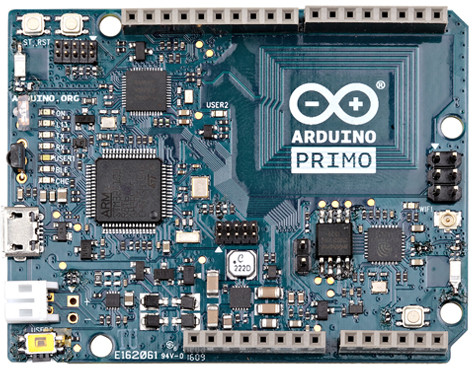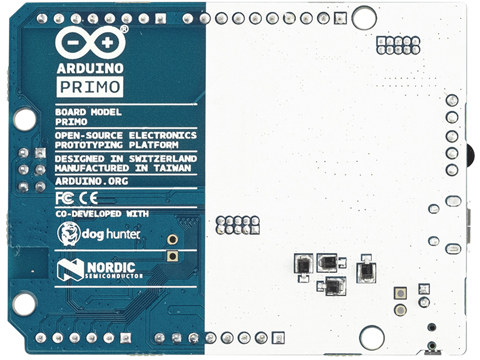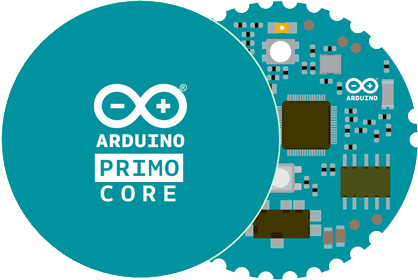A couple of weeks after unveiling Arduino UNO WiFi with ESP8266 and Atmel AVR, Arduino Srl has introduced Arduino PRIMO board with Nordic Semi nRF52 MCU with Bluetooth Smart and NFC, ESP8266 for WiFi, and STM32 to handle GPIOs and USB UART during May Faire Bay Area 2016.
Arduino Primo board (A000135) specifications:
- Service Micro-controller
- STMicro STM32F103R8T6 ARM Cortex-M3 MCU @ 72 MHz with 64KB flash, 20KB SRAM
- USB/Uart converter & CMSIS-DAP
- GPIO expander, IrDA
- Board power management
- Operating Voltage – 2.0 to 3.6 V
- Arduino Micro-controller
- Nordic nRF52832 ARM Cortex-M4F MCU @ 64 MHz with 512 KB flash, 64KB SRAM
- Analog I/O Pins – 6 + 1 DAC
- DC Current per I/O Pins – 7 mA
- Bluetooth Smart – Up to +4 dBm output power, -96 dBm sensitivity
- Other features – PDM interface, AES HW enc, NFC tag
- WiFi Micro-controller
- Espressif ESP8266 Tensilica Xtensa LX106 WiSoC @ 80 MHz with 8MB RAM for instructions, 12MB for data
- Storage – 4MB SPI flash
- WiFi 802.11 b/g/n 2.4 GHz
- Wake up time – < 2 ms
- Operating Voltage – 3.3 V
- Common Specs
- Digital I/O – 20 pins
- PWM Output – 3
- Misc – On-board button, LED
- Input Voltage – 5V
- Power Consumption – 87 mA @ 5V typ.
- Dimensions – 68.5 x 53 mm
- Weight – 34 grams
The board is not yet available, and documentation is limited to what’s on the product page. But we can safely assume that the board will be programmable via the Arduino IDE, and Nordic also mentioned that professional developers and Makers will also be able to use any Nordic nRF52 Series-compatible Software Development Kit (SDK) or programming tools, for example to develop IPv6 over Bluetooth low energy applications.
Arduino Srl and Nordic Semi are also working on a coin-cell powered Arduino Primo Core module with nRF58232 chip and motion and environmental sensors.
Considering the recent legal history between Arduino Srl and Arduino LLC, I’m a little surprised they went with Arduino Primo, as Arduino LLC is also selling a toy designed to teach programming logic to young children, also called Primo.
AFAIK, no information about the launch date and pricing have been released so far.

Jean-Luc started CNX Software in 2010 as a part-time endeavor, before quitting his job as a software engineering manager, and starting to write daily news, and reviews full time later in 2011.
Support CNX Software! Donate via cryptocurrencies, become a Patron on Patreon, or purchase goods on Amazon or Aliexpress







